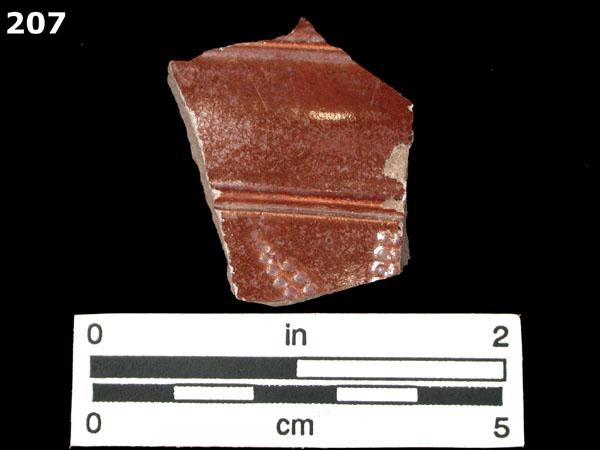View all examples of STONEWARE, NOTTINGHAM

| Type Name: | STONEWARE, NOTTINGHAM |
| Type Index: | STONEWARE |
| Production Origin: | ENGLAND |
| Date Range: | 1700-1810 |
| Defining Attributes: |
Thin, hard, grey, orange or buff stoneware paste. Surface is brown and lustrous, often with a burnished metallic appearance produced by the use of a lustrous brown slip under very fine salt glazing. Glaze color can vary from light brown to dark brown. Decoration can include applied grog or crumb elements, machine-turned and rouletted patterns, applied molded elements, sprigging, piercing, and incised names, dates and floral elements. Fragments often have a thin white line separating the glaze and body. |
| Vessel Forms: |
BOWL CUP MUG PITCHER VASE |
| Comments: | Although referred to as Nottingham stoneware, this ceramic variety was also produced in other parts of England such as Burslem, Staffordshire, Derbyshire, and Yorkshire. The typical "orange peel" finish of salt-glazed wares is barely evident on Nottingham stoneware. Applied crumb and grog design was used between about 1740 and 1780, and the use of molded, pierced, sprigged and applied decoration developed around 1750. Incising and Engine turning were used throughout the 18th century. |
| Published Definitions: | Noel Hume 1970, 2001; Oswald 1974 |